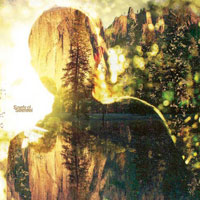On a weekly basis, The Groove Seeker goes in search of killer grooves across rock, funk, hip hop, soul, electronic music, jazz, fusion, and more.
 Seefeel: Seefeel (Warp Records, 1/31/11)
Seefeel: Seefeel (Warp Records, 1/31/11)
Seefeel: “Dead Guitars”
[audio:https://alarm-magazine.com/wp-content/uploads/2011/02/02-Dead-Guitars.mp3|titles=Seefeel: “Dead Guitars”]A largely forgotten mid-’90s band that was always ahead of its time, Seefeel has released its first album in 14 years. The self-titled record feels like a debut, and it is to a certain extent, considering the band’s lineup changes. Seefeel explores the territory of electronic outfits such Battles and Emeralds, bands that were influenced by Seefeel’s 1993 debut Quique. It feels like some sort of weird déjà vu. If anything, it’s an impressive rebirth, one that has the group deconstructing the sample-based post-rock style it pioneered before MIDI sequencers were even looked at as viable forms of instruments.
Formed in 1992 in London, Seefeel’s music was once stylistically situated between shoegaze pop and what people were calling “ambient techno.” It had a smooth nonchalance to its music, with ambient electro-pop symphonies strung together by Sarah Peacock‘s sparse, dream-like vocals.
Noise pop is perhaps the best way to describe its music retrospectively — or IDM before IDM was IDM. Though we must not forget those higher on the electronic family tree (Kraftwerk comes to mind), Seefeel’s importance to the scene lies in fending off the “dance” label. What’s more, as the first “guitar” band signed to Warp in 1994, its use of live instruments also speaks to its groundbreaking artistry.
For the new lineup, founders Mark Clifford and Peacock enlisted Brighton-based producer Shigeru Ishihara (DJ Scotch Egg) to play bass and ex-Boredoms drummer Iida Kazuhisa. Both additions have proved to be positive on Seefeel’s 21st Century dynamic, bringing in fresh, experimental angles to the group’s overall sound.
From the get-go, on opener “O-One One” and first single “Dead Guitars,” we hear Seefeel venturing deeper into left-field sounds, and showing no affection for the pop-centric electronica of its past. The latter is as morose as it sounds, a track defined by skittish synth lines and brooding yet melodic hums. Bass and drums pound in unison, sparse and eerily driving.
The rest of the album stays at this down-tempo pace, moved along by synth scratches that ride a fine line between endearing and electronic vomit. But this is why the record is so absorbing: a tension lies within the beauty of the chaos, like when the dizzying “Step Up” is followed by the striking multi-layered vocals of “Faults.” Quique’s catchy, looped guitar riffs are replaced by digital meanderings; Seefeel is able to turn glitches and dub-like wobbles into quasi-signature hooks propelled into a world of their own.
This loosely structured world allows the band to improvise. By locking into grooves, such as on “Rip-Run,” the rhythm section sets a deep template over which Clifford and Peacock run amok. The rhythm becomes meditative, leaving the more electronic-based elements to find tangents they feel comfortable in.
Fortunately, it doesn’t take long for these hazy melodies to find a good home. Though they might be buried in estranged electronic chords, they’re definitely there. More immediate gratification can be found on tracks like “Making,” where a catchy melody can be found somewhere between the constrained rhythm, Peacock’s smeared vocals, and the synth line that seems to mirror itself. As disparate the track sounds, it’s perhaps the most conventional in the collection.
As a sonic experience, this self-titled record is ultimately a celebration of mechanical darkness and strange melody. It’s a welcome renewal to a project that began almost 20 years ago. Seefeel is pushing the boundaries of its own sound while doing the same for the ever-evolving electronic genre.

